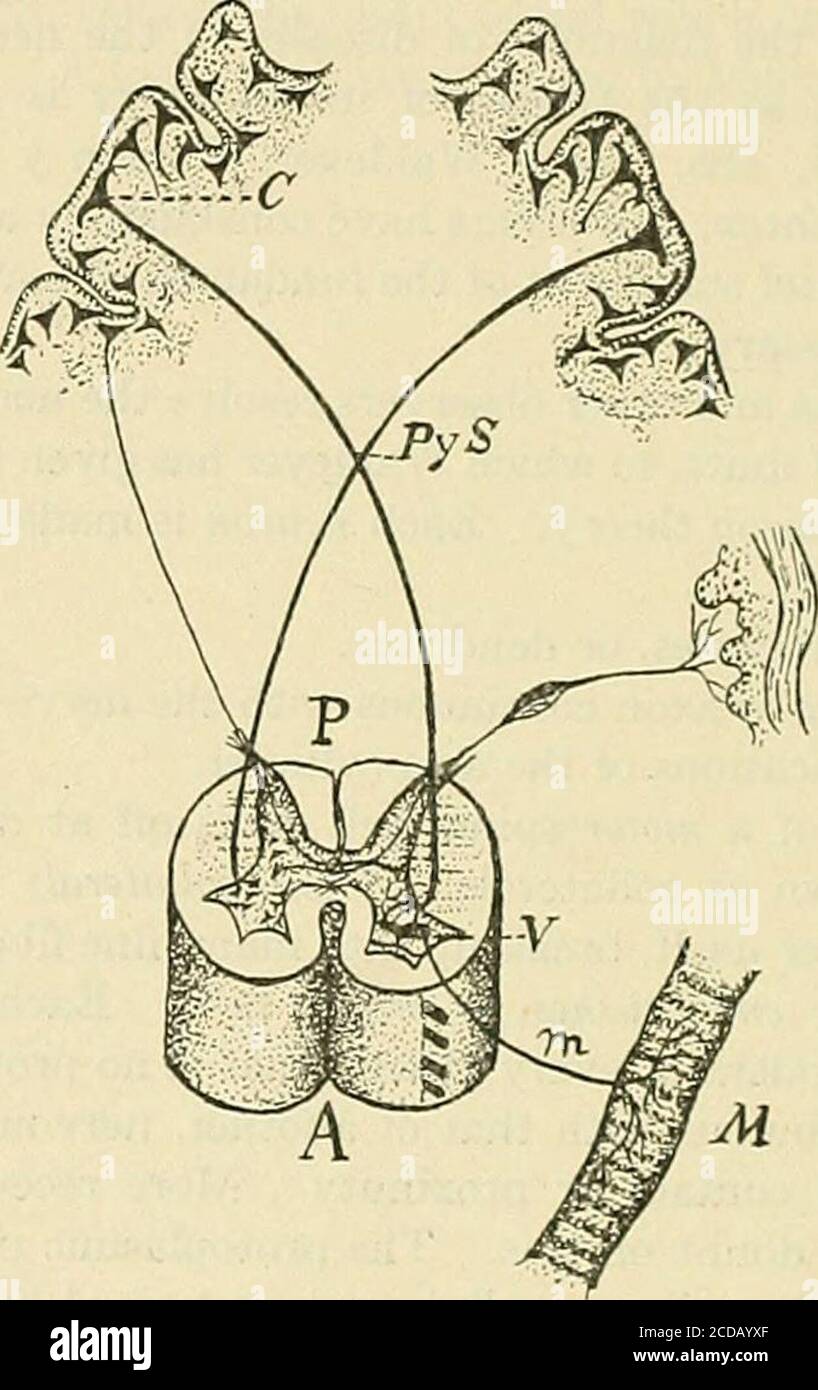. The practice of medicine; a text-book for practitioners and students, with special reference to diagnosis and treatment . - them cellulipetalto the ganglion cells on the posterior roots of the spinal nerves, whence theyare conveyed by the axis-cylinders cellulifugal to the cord. This impres-sion may result in a reflex act, or it may proceed to the brain and gie riseto a volitional act through the m.otor tract.. Fig. 134.—Diagram of an Element of the Motor Path—{after Strum pell, modified).C. Motor ganglion cell in the cerebral corte.x. Py S. Lateral pyramidal tract, central orupper motor ne

Image details
Contributor:
Reading Room 2020 / Alamy Stock PhotoImage ID:
2CDAYXFFile size:
7.1 MB (252.3 KB Compressed download)Releases:
Model - no | Property - noDo I need a release?Dimensions:
1254 x 1992 px | 21.2 x 33.7 cm | 8.4 x 13.3 inches | 150dpiMore information:
This image is a public domain image, which means either that copyright has expired in the image or the copyright holder has waived their copyright. Alamy charges you a fee for access to the high resolution copy of the image.
This image could have imperfections as it’s either historical or reportage.
. The practice of medicine; a text-book for practitioners and students, with special reference to diagnosis and treatment . - them cellulipetalto the ganglion cells on the posterior roots of the spinal nerves, whence theyare conveyed by the axis-cylinders cellulifugal to the cord. This impres-sion may result in a reflex act, or it may proceed to the brain and gie riseto a volitional act through the m.otor tract.. Fig. 134.—Diagram of an Element of the Motor Path—{after Strum pell, modified).C. Motor ganglion cell in the cerebral corte.x. Py S. Lateral pyramidal tract, central orupper motor neuron. V. Ganglion cell of anterior horn. m. Motor nerve, peripheralneuron. M. Muscular fiber. A motor impulse starting from the brain cortex must pass through atleast two sets of nevuons before it can reach the muscles. In this courseit is cellulifugal from the cell in the cortex, cellulipetal to the cells in the graymatter at different levels in the anterior cornua, and thence celltdifugalfrom the latter cells to the various muscles of the body, ending in the end-plates. Hence we speak of the motor tract as being composed of twosegments, an upper and a lower. The neurons of the upper motor segmenthave their cell bodies and protoplasmic processes in the cortex in frontof the fissure of Rolando. The axis-cylinder processes run through theinternal capstile and the cerebral peduncles, through the pons, me